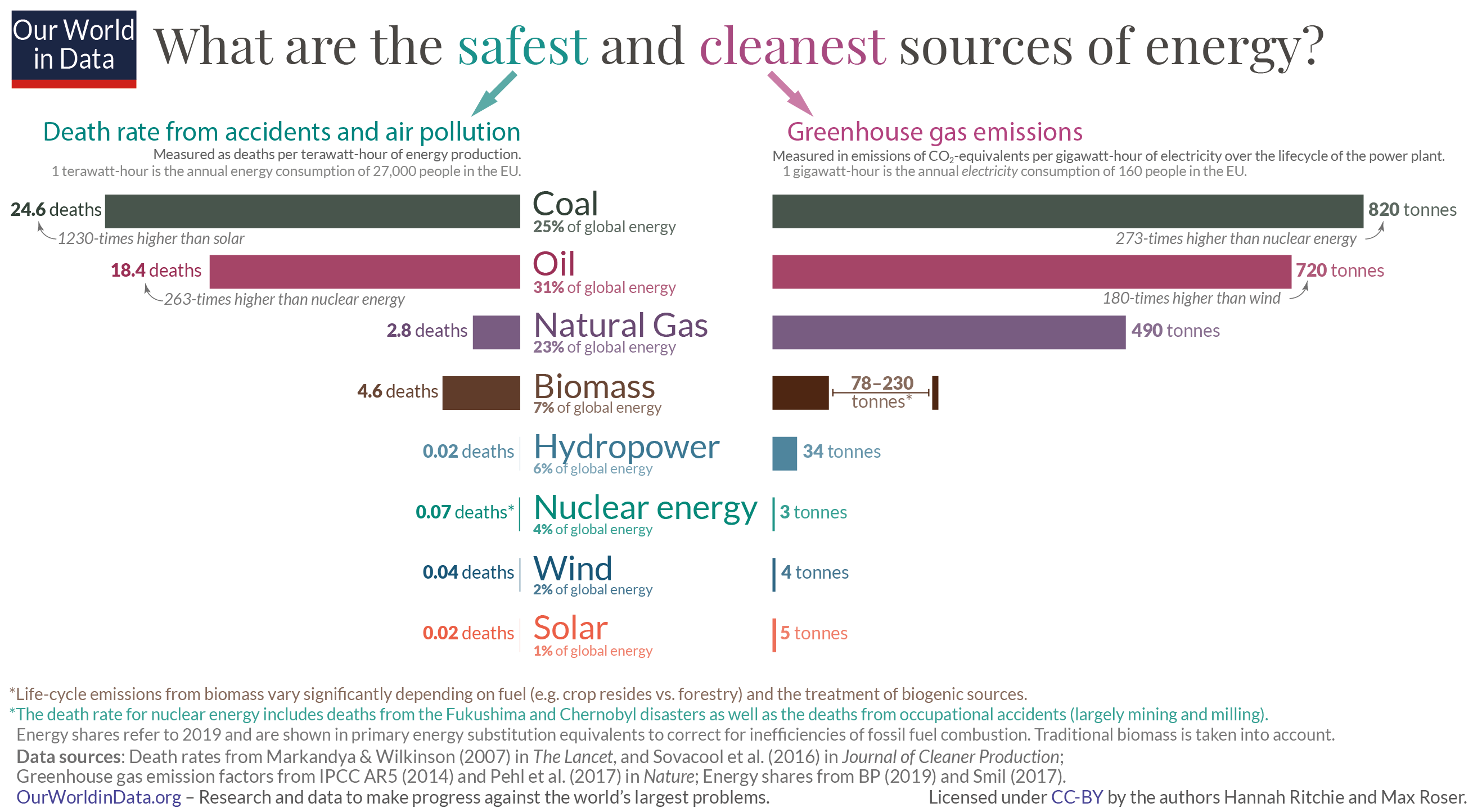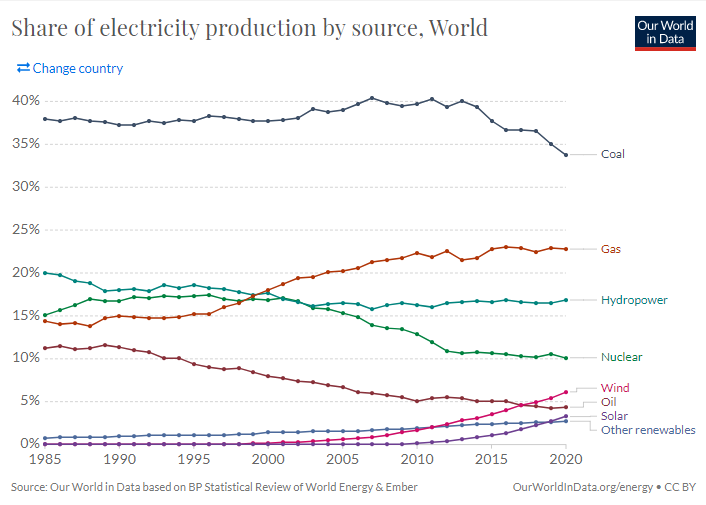The world needs more energy. Specifically, it needs more clean energy. Global electricity consumption has doubled over the last 30 years, and with an increased population and ambitious climate change goals, the world needs a source of cheap and clean energy, sooner rather than later.
Nuclear power was once billed as the cheap, clean energy of the future. It’s been around since the ‘50s, but the technology hasn’t fulfilled its original promise, and now makes up only 10% of the world’s energy production.
Renewables have a role to play in solving the world’s clean energy demand, but they aren’t dispatchable (supply can’t be adjusted to demand) and have mainly gained traction in countries where there are heavy subsidies.
Nuclear can provide a cheap, dispatchable, and sustainable source of energy, so why hasn’t it taken off?
Most of these arguments from Jack Devanney’s book: Why Nuclear Power Has Been A Flop. I’ve also heavily relied on this summary to navigate the book.
Why has nuclear failed?
The simple answer is costs. You’d expect costs to decrease as the technology matures. The experience curve for any industry suggests that unit costs drop as the quantity of a particular good is produced. However, with nuclear energy, this cost reduction hasn’t been as marked as expected. In the US, the curve actually inverted - i.e. as more nuclear energy was produced, it became more expensive per TWh.
Why are costs so high?
Regulation and plant design
- Nuclear power is a heavily regulated industry. Both design and operation of plants are highly scrutinised. Regulators build models to estimate the risk of accidents. They do this by assigning a failure probability to every component/ system in a plant, and then rolling these probabilities up into an overall probability of an accident. As you can imagine, these models become highly complex and are fed with very sparse real data. The result is highly inaccurate assessments of risks and therefore suboptimal assignment of resources.
- A governing principle of nuclear plant design and operation is to keep risks ALARA (As Low As Reasonably Achievable). There are risks in everything we do, and especially in energy production. However, when it comes to nuclear, regulators push ALARA to its limits. How low is reasonably achievable in nuclear? Regulators compare plant construction and operating costs to other forms of energy production and decide what ALARA should be. Since there’s always a direct comparison to other forms of energy, nuclear can’t innovate and become cheaper. Whatever costs it can squeeze out through innovation will always need to be fed back into additional safety measures (e.g. 3rd backup cables)
Perception of safety
- Radiation is natural and is everywhere. Significant radiation releases from nuclear plants are very rare and do not all lead to major public health hazards. However, the regulating agencies follow the Linear No Threshold (LNT) model, which assumes there is a linear relationship between radiation exposure and cancer risk. Devanney argues the model is too simplistic and doesn’t follow observation or theory. It’s damaging to the industry because low-level radiation is perceived as a very high risk. Devanney gives interesting anecdotes of overcompensation when it comes to low levels of radiation.
- There is also a perception that nuclear is really dangerous. In reality, there are risks with all forms of energy production. When you look at the stats, the number of deaths (both pollution and accidents) from nuclear energy are really low (see below). There have only been 3 major incidents with nuclear power. Chernobyl, the first major disaster, was due to really poor reactor design. This was more than 30 years ago and technology has improved significantly since.

What to do?
Devanney suggests a complete overhaul of the industry. Regulation has picked up a lot of baggage along the way and is constrained by tradition. However, he mentions a number of actionable things in the short term:
- Replace the LNT radiation model with a sigmoid one. The sigmoid model has a low risk at low exposure, but once a threshold is reached, the risk increases significantly. This is closer to observation and theory.
- Drop ALARA - it’s extremely inefficient. Engineers cannot design to ALARA standards, and investors don’t want to be exposed to ALARA since it doesn’t allow for the minimisation of costs.
- Align incentives of regulators to the industry, introduce competition in the industry, and ensure thorough testing rather than complex theoretical modelling.
